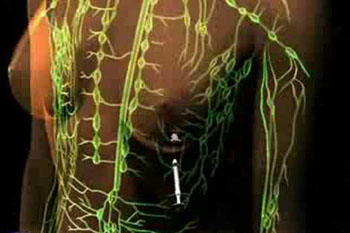Novel SLN Tracer Maps Breast Cancer Metastasis
By MedImaging International staff writers
Posted on 01 Sep 2016
A new study describes how a novel sentinel lymph node (SLN) radiotracer helps determine breast cancer spread by targeting a specific antigen.Posted on 01 Sep 2016
Researchers at Beijing Cancer Hospital (BJC; Beijing, China) and Peking University Cancer Hospital & Institute (Beijing, China) conducted a retrospective study of 2,317 patients with primary breast cancer who underwent lymphoscintigraphy and sentinel lymph node biopsy (SLNB). Before imaging, all patients were administered a preoperative peritumoral injection of 37 MBq of 99mTc-rituximab, a new SLN radiotracer that binds to the antigen CD20, which is expressed extensively in lymph nodes.

Image: A sentinel node biopsy for breast cancer diagnosis (Photo courtesy of CancerQuest).
Initial results in 100 randomly selected patients showed that the detection rate for SLN by injection of Tc-99m-rituximab, as verified by lymphoscintigraphy, was 100%. SLNs from the 100 patients were then harvested, guided by a hand-held gamma-detecting probe, and biopsied with a similar success rate of 100%. When examining results of the other 2,217 patients in the study, the detection rate was 98.8% percent for lymphoscintigraphy and 99.9 % for SLN biopsy. The study was published in the August 2016 issue of The Journal of Nuclear Medicine.
“The advantage of Tc-99m-rituximab is its uniform molecular weight and molecular size. It does not escape easily from SLNs to the second echelon lymph nodes,” said senior author Zhi Yang, PhD, chair of the department of nuclear medicine at BJC. “This results in clear SLN imaging in patients and the high success rate of lymphoscintigraphy. In addition, technical factors, such as the injection dose, injection volume and injection site, can be well controlled.”
Lymph nodes serve as biologic filters that contain immune cells to fight infection and clean the blood. When cancer cells break away from a tumor, they can travel through the lymph system; sentinel node surgery allows the surgeon to remove the nodes to determine cancer spread. Since human lymph nodes are only a half-centimeter in size, they are difficult to discern among the surrounding tissue during surgery. Furthermore, even when surgeons are able to map the location of the nodes, there is no current technique that indicates whether or not the lymph nodes contain cancer, requiring removal of more lymph nodes than necessary.
Related Links:
Beijing Cancer Hospital














